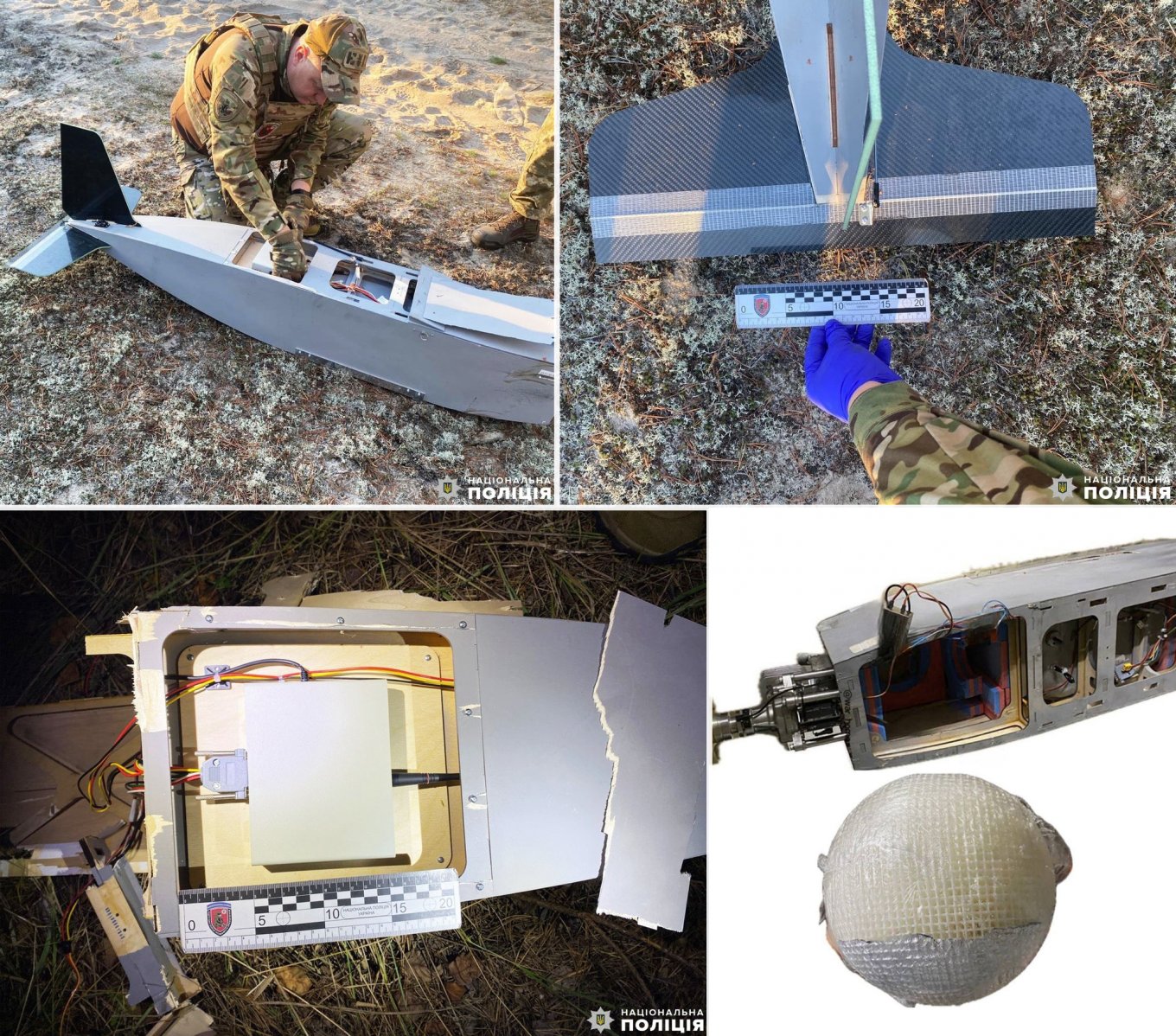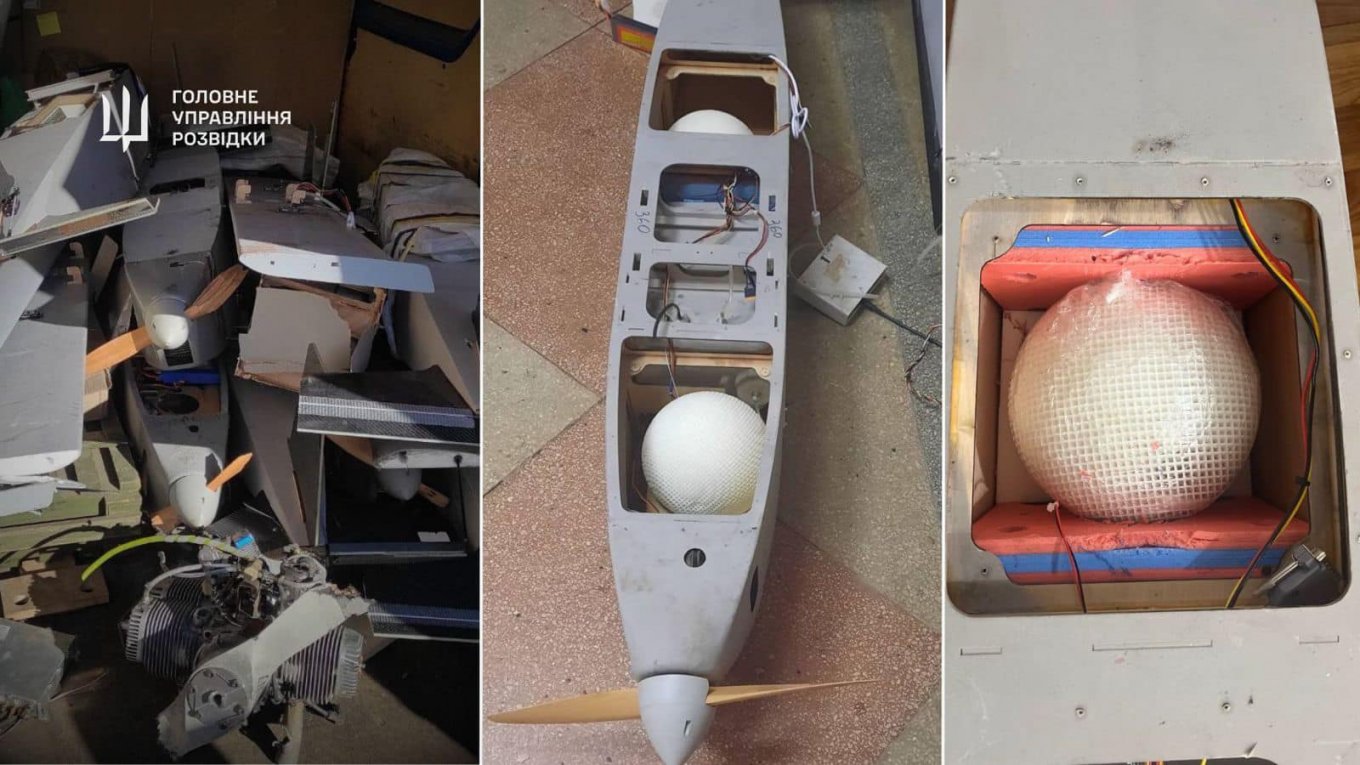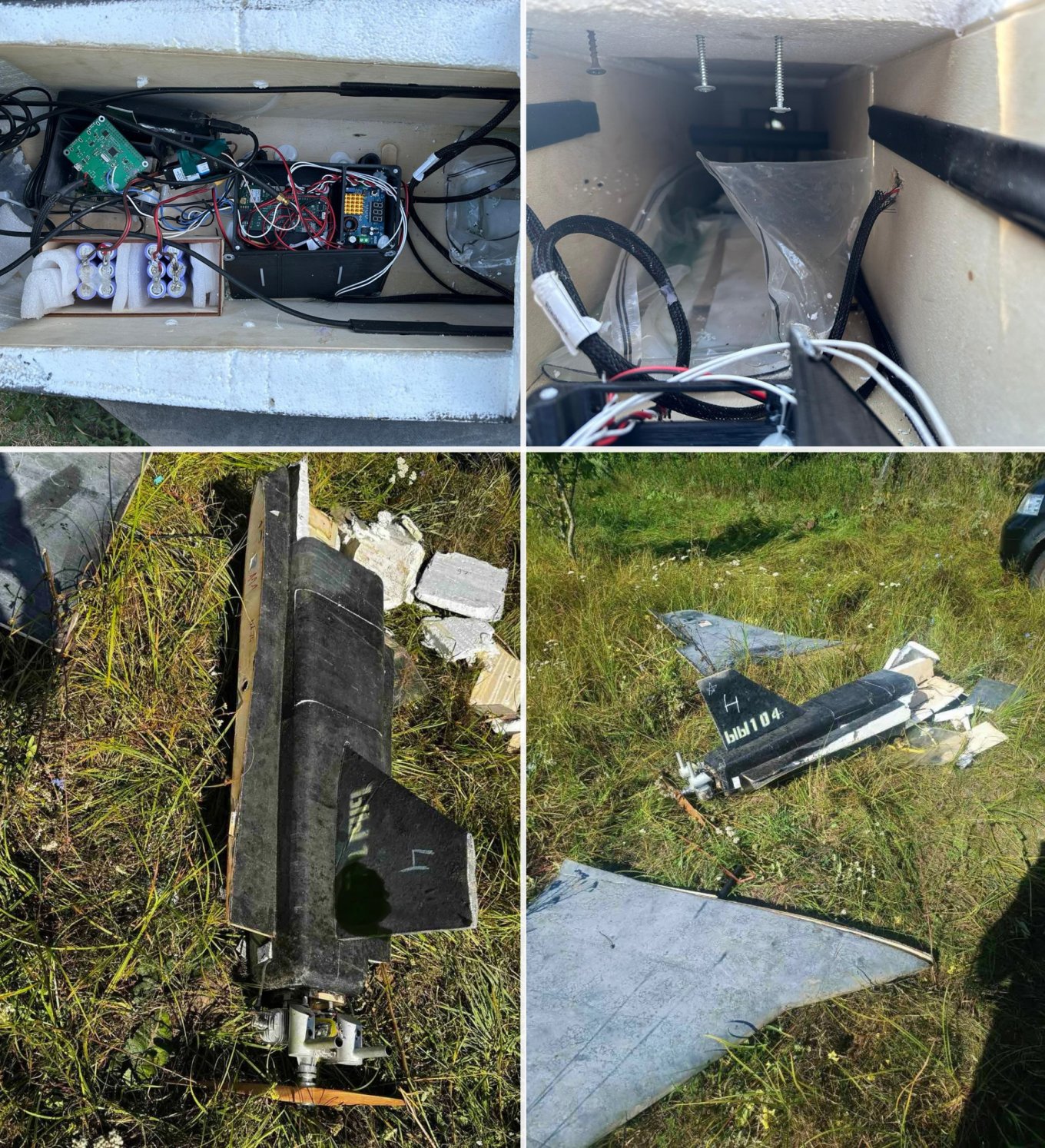Together with the well-known decoy targets "Gerbera," made from foam, the Russian Federation is also actively utilizing a drone called "Parody," which serves a similar purpose. According to the Air Force Command of Ukraine, up to 50% of these "Gerberas" and "Parodies" may be deployed alongside the mass launch of "Shaheds."
It is important to note that "Parody" is a higher-quality product compared to "Gerbera." In particular, the photo shows that the plywood drone exhibits a superior overall manufacturing quality.

Moreover, its ability to appear on radar screens as significantly larger than the "Shahed" is facilitated by a Luneberg lens. This is the same sphere partially covered in foil that reflects radar emissions with great amplification.

For comparison, a photo of "Gerbera" can be presented, where thermal glue, various screws, and a lack of cable management are prominently featured.

At the same time, all the electronics in both products are generally similar and utilize only components available on the civilian market. For instance, the total cost of electronics in "Gerbera" is no more than 100-200 dollars, with the most expensive component being its motor.
Additionally, it should be noted that the RF employs specific tactics where decoy targets not only divert air defense resources but also create genuine "corridors""corridors" within the Ukrainian air defense formations. However, the actual effectiveness of such measures is significantly lower than what Moscow might have anticipated.
In October, of the record number of UAVs, both strike and decoy, only 4.83% hit their targets, while all others were shot down, suppressed by electronic warfare, or simply fell and were "lost location-wise." In contrast, in August of this year, when there were almost no decoy targets, 818 Russian drones demonstrated an effectiveness of 3.18%.
This means that the increase in drones by 2.5 times led to an effectiveness increase of only 1.65%, which falls within the margin of statistical error. This data comes from the statistics published by the General Staff of the Armed Forces of Ukraine to clarify whether the number of "Shaheds" shot down has increased or decreased.